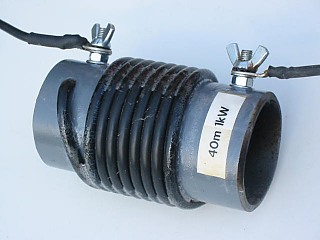

However, if the only repeater you intend to use from your home is a 2m machine, and you have no interest in other VHF/UHF band operations, then a single band VHF antenna may be your choice.

I highly recommend a dual band radio and antenna for the new Technician Class ham as a starter station, most typically the 2m/440 combo with an antenna to match. Probably the most popular combination is the 2m/440 dual band scenario mentioned above, but tri-banders that include the 220 MHz band or the 6m band are very popular, as well as combinations of 2m/220, and other combinations. Single band or multi-band antenna? With multi-band radios now so readily available to hams, the majority of folks are likely to desire a multi-band antenna with which a single feed line can be used. And remember, every antenna is a compromise, so carefully check out the design and performance reports before finalizing your decision. With a homebrew solution you can save some money, but be prepared to invest the time and effort necessary. Yagi directionals for VHF ops are great projects, if you seek that directional boost in signal gain for your situation. Even easier to construct is a single-band, half-wave dipole, and you can also find plans online for 2m/440 dual band dipoles. For instance, the J-Pole antenna design for 2m/440 ops is a very popular homebrew project, and it can be created with simple aluminum from the hardware store or even from segments of twin lead feed line. There are many simple designs provided by a whole world of hams to choose from. For a typical dual-band “base” VHF/UHF antenna designed for exterior mounting on a structure or mast you can expect to pay from $35 to $300, depending on quality, durability, and performance factors such as gain.īut if you’re the crafty type and enjoy a good challenge, you may want to homebrew your own antenna. If you want to open the wallet instead of the tool box, a commercial antenna is your best choice. Most commercially available antennas are going to provide great performance and even greater convenience! In virtually all cases you can simply buy-and-install with only the requirement of connecting a feed line to the antenna.
Cheap 2 meter antenna portable#
I use three or four different ones in my home and in portable station operations of various flavors. We’ll start with a few important decisions you need to make.Ĭommercial purchase or homebrew? There are many, many fine commercial antennas on the market for VHF/UHF operations. In one brief article we can’t cover every detail that you might want to think about in selecting a VHF/UHF antenna for your home or shack, but let’s hit a few important factors, including those that Randy had to consider with his project. Let’s take a look at some of the things Randy and I considered for his antenna project and wrap up with a description of his solution.
Cheap 2 meter antenna install#
I had a terrific time helping Randy review some of the factors involved in erecting a VHF/UHF dual band antenna for 2m and 70cm bands and then helping him install and test it out.
Cheap 2 meter antenna upgrade#
While he plans a future station upgrade to a more powerful mobile-base transceiver, he sought first to improve his home antenna such that he can use the HT in the short term and integrate a mobile-base transceiver later. The 5 watts of his HT coupled with the really convenient, crappy antenna just didn’t quite provide the performance he needed to reliably hit the repeater with a readable signal.Īfter the fire emergency, Randy decided it was time to upgrade his station for more reliable operations in the local area. His home is located just on the leeward side of a hill from the repeater that is about 7.5 miles distant. Randy has been using a 2m/440 MHz dual band HT with one of those really convenient, crappy antennas we refer to as a rubber duck. It was a valuable resource in our community for rapidly disseminating fire information. Our local hams kept the repeater very busy during the days of the fire relaying the latest information gleaned from emergency response links, commercial sources, AREA and RACES volunteers, and more. His signal just wasn’t quite strong enough to be readable.

Are you ready to establish a home station for FM ops on the VHF and UHF bands, and are you wondering what you need to do about an antenna? Let’s review some of the things you need to consider in establishing a highly performing antenna for your home station, including antenna types, coaxial cable characteristics, connectors, and more!ĭuring the recent devastating Black Forest fire in central Colorado, my good friend and colleague, Randy, had great difficulty maintaining solid radio communications through our local repeater from his home.


 0 kommentar(er)
0 kommentar(er)
